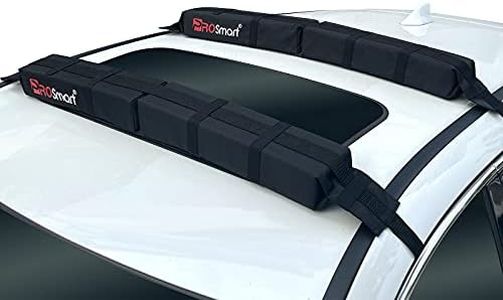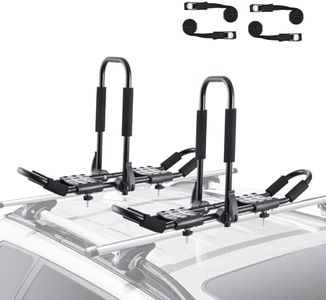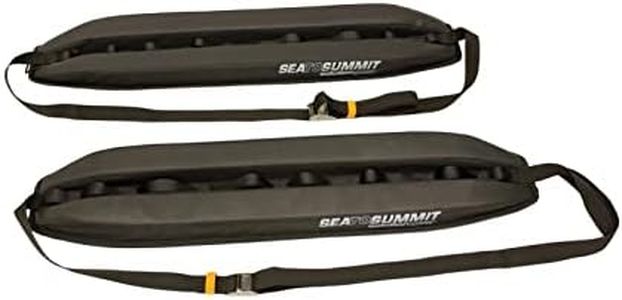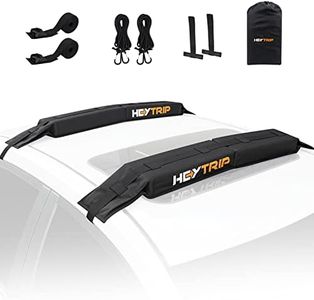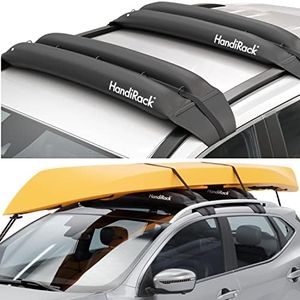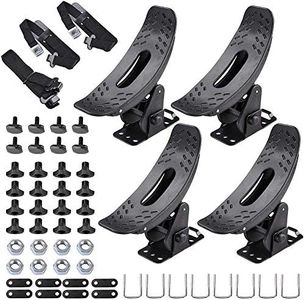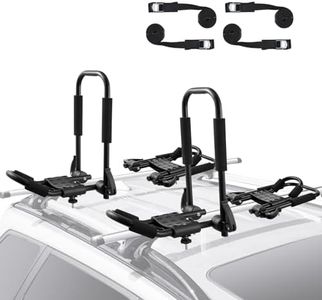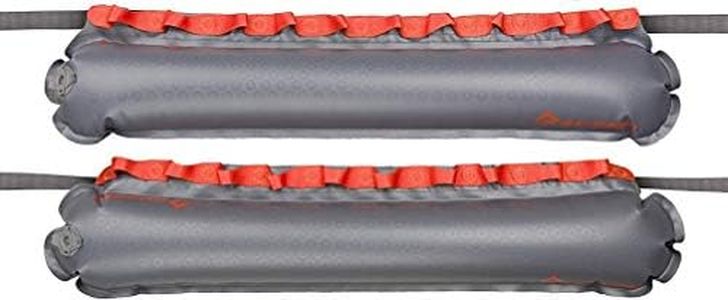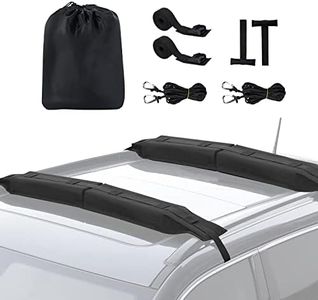We Use CookiesWe use cookies to enhance the security, performance,
functionality and for analytical and promotional activities. By continuing to browse this site you
are agreeing to our privacy policy
10 Best Kayak Carrier No Roof Rack
From leading brands and best sellers available on the web.Buying Guide for the Best Kayak Carrier No Roof Rack
Choosing a kayak carrier when you don't have a roof rack on your vehicle can seem tricky, but with the right approach, you can find a solution that is secure, safe, and convenient. The best carrier for you depends on your vehicle type, how often you kayak, whether you’re carrying solo or with help, and how much you want the carrier to be permanent or temporary. It's important to think about ease of installation and removal, how securely it will hold your kayak, and any impact it might have on your car’s paint or body.Mounting SystemThe mounting system refers to how the kayak carrier attaches to your vehicle. Since there is no roof rack, most options use straps that go through the doors or windows, or pads that rest directly on the roof. The importance of the mounting system lies in stability and safety – it needs to hold your kayak firmly without damaging your vehicle. Soft, foam block systems are common for vehicles without racks, and they’re great for temporary, infrequent use. They fit most cars and are easy to put on and take off. Suction cup systems offer a stronger grip and are often easier on the car’s paint, suitable for more frequent use or higher speeds. Choose based on how often you need to move your kayak and how much effort you want to spend on setup and removal.
Padding Material and DesignPadding material prevents scratches and dents on your car’s roof while supporting the kayak during transport. Most no-rack carriers use foam, rubber, or inflatable pads. foam pads are soft and absorb impacts well, while inflatable pads are more compact when not in use and can conform to different roof shapes. Rubber pads can be very grippy but may be heavier. If your trips are short and occasional, basic foam is plenty. For longer or frequent trips, look for thicker, durable, or inflatable designs for extra protection and comfort.
Strap Quality and SecurityStraps hold the kayak carrier (and your kayak) firmly to your vehicle. Good straps are strong, wide, and include buckles that do not slip. This is important because flimsy straps mean your kayak could shift or come loose while driving. Some straps have padding around the buckles to avoid scratching car paint. For peace of mind, choose carriers with heavy-duty or cam-buckle straps, and if you usually travel at highway speeds or in windy conditions, opt for reinforced or locking strap options.
Ease of Installation and RemovalHow quickly and easily you can put the carrier on your car and take it off matters, especially if you don’t leave it on the vehicle all the time. Simple block-and-strap systems install in minutes without tools, but may need more adjusting to avoid slipping. More advanced systems, like those with suction cups, may cost a bit of time upfront but come with added security and ease after a few uses. If you’re often on solo trips or want minimal hassle, look for user-friendly, tool-free designs.
Compatibility with Vehicle and KayakCheck that the carrier fits both your vehicle's roof type (curved, flat, or with sunroof) and your kayak (size and shape). Some carriers are universal and adaptable, while others fit only sedans or SUVs, or particular kayak widths and hull types. If your kayak is especially wide, heavy, or oddly shaped, look for carriers that accommodate those features. Similarly, if your car has a slick or glass roof, certain systems may be more secure or protective.
